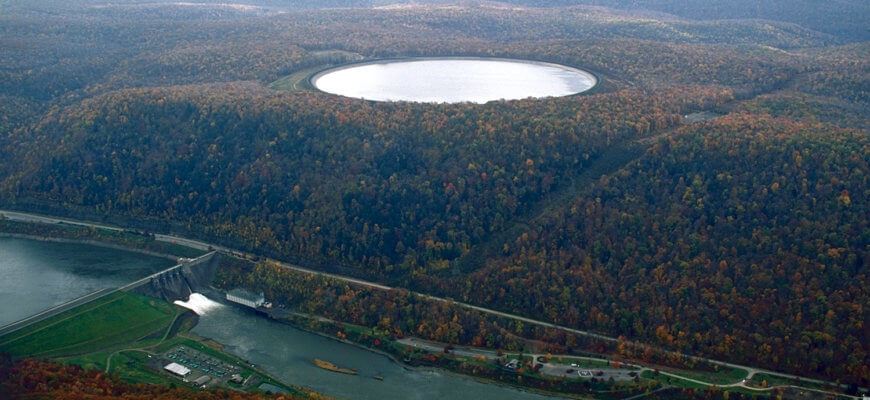I was thinking to write an article including a specific technology about the possibilities of energy storage for wind and solar power. These two are the most commonly used renewable energy sources and I was mind-bending to find a solution of storing wind and solar power in a Biomimetic way.
Then I thought that this mind-bending process itself could be a good article. And here we are. I think the right name for something like the following could be POV (point of view). Here we could write just about our thoughts about a specific topic, without the usual scientific procedure, just to share that with you, our readers.
In my opinion is a Biomimetic approach not realistically possible with our current model of energy generating and distribution. At the moment, humanity has two kinds of “end energy” (energy that comes to the end user) in use. The first is electrical energy and the second is heat energy. Besides that, our body needs fuel, which is a chemical energy in form of nutrients (carbohydrates, fats and proteins).
I would like to concentrate on energy distribution in the common way.
At the moment, most energy grids are organized in a centralized system. There are power plants and other energy providers outside of cities and the grid transports energy to the places where it gets used. Here is the one and only current energy storage in the distribution system: The grid itself. (I just ignore some specific exceptions like pumped-storage power, because it’s not a permanent part of the grid. It is just another kind of power plants, which is a „kind of“ storage.)
A grid is not only restricted to electrical energy; other energy carriers are using some kind of a grid, too.
Why is a grid an energy storage?
Energy is not only flowing through the grid to its user (or load). When you are going through a system as it is, the system needs a specific capacity to perform this action. This capacity is the storage and it is a tool to regulate the flow of energy or other energy carriers.
What other types of storage are also used?
Usually not during the distribution, but you could consider the primary energy carrier as one. Primary energy is the original energy carrier for example oil, gas or coal, the so-called fossil energy sources. Wind and the sun are also primary energy sources.
To keep the grid in balance it is necessary to regulate the in- and output to the grid. This is usually done via adding and removing of power plants, or more rarely, the cut of consumer/load.
This is the classic centralized grid.
How does nature provide power?
I think here is the main problem of human thinking: too straight forward. Does nature really “provide” or “distribute” energy? Or is it more like a set of basic principles based on the laws of physics? If I had to describe my imagination, I would start with the following:
Nature provides energy completely non-centric, or how the modern economists would say: circular. First off all, life itself is an unbalance of energy levels. If my energy content of my body was in balance with my environment, I would be dead. So, the basic principle of every form of life is to gain an energy advantage to the environmental energy level.
Based on this circumstance, every form of life is an energy storage and a load/consumer. The energy is stored near to the location where it is used. Another point is the kind of energy that a lifeform can use to store or consume, which is usually not the same.
For example, plants which use photosynthesis. There are different forms of matter and energy, which combined, lead to the energy storage from where the plant consumes.
Absorb sunlight (solar energy) –> Transformation into chemical energy –> Synthesis via reducing agents (like water or hydrogen) –> Carbohydrates
The primary energy source itself is the sun. It would therefore be useful to migrate to places where a high potential of sunlight is available. Same counts the other needed sources.
By the way, thought in a big scale, wind power`s primary energy source is also the sun, means we only have 2 big scaled energy sources available: the sun and the chemical/thermal energy which was stored during the planet’s creation.
How to connect these principles?
The biggest problem, in my opinion, is the adaption of human thinking to the endless woven system of energy exchange, which we call nature.
From the previous discussion I would like to crystallize some major points, which seem valid to me.
- We need to switch from a centralized energy grid system to a decentralized system.
- Every consumer needs to have an energy storage from which the energy will be taken instead from the grid itself.
- Reducing of the personal freedom to use energy wherever and whenever we want.
Maybe some words are necessary for every point except for point 1, because this should be clear after the discussion above.
Also, the second point could be instinctual feel right. The main reason for this is the regulation of a decentralized system. If there are only consumers, energy must be provided from power plants (wind, solar, nuclear or fossil) immediately. When every consumer has its own energy storage, energy could be transferred inside the grid itself and it would be possible to adapt to the “unsteadiness” of nature’s renewable energy sources.
My third point is directly connected to the former points. Reducing some “freedom” maybe sounds rough, but I honestly mean it in that way, because reducing is the side effect of active thinking about the energy consumption. This starts with not cooking at midnight or driving alone in your car.
Every form of life has to think about its own energy consumption and how it can provide enough or can manage time with a low energy level. We as humans have not often this way of thinking. This is the result of availability of energy at every time. We calculate energy in money, because to a certain point, we reduce all things to money. So, there is no difference anymore in buying your drinks, furniture or fuel. It makes things easy. But maybe, just maybe, it should not be easy.
Kind regards,
Jan
Title picture:
Seneca Pumped Storage Generating Station above Kinzua Dam on the Allegheny River — in Warren County near Warren, Pennsylvania.View of the Seneca pumped storage reservoir. The reservoir holds 2.1 billion gallons of water and covers 100 acres. It was completed in 1970.
18 October 1993
U.S. Army Corps of Engineers Digital Visual Library – United States Army Corps of Engineers photographer Margaret Luzier



